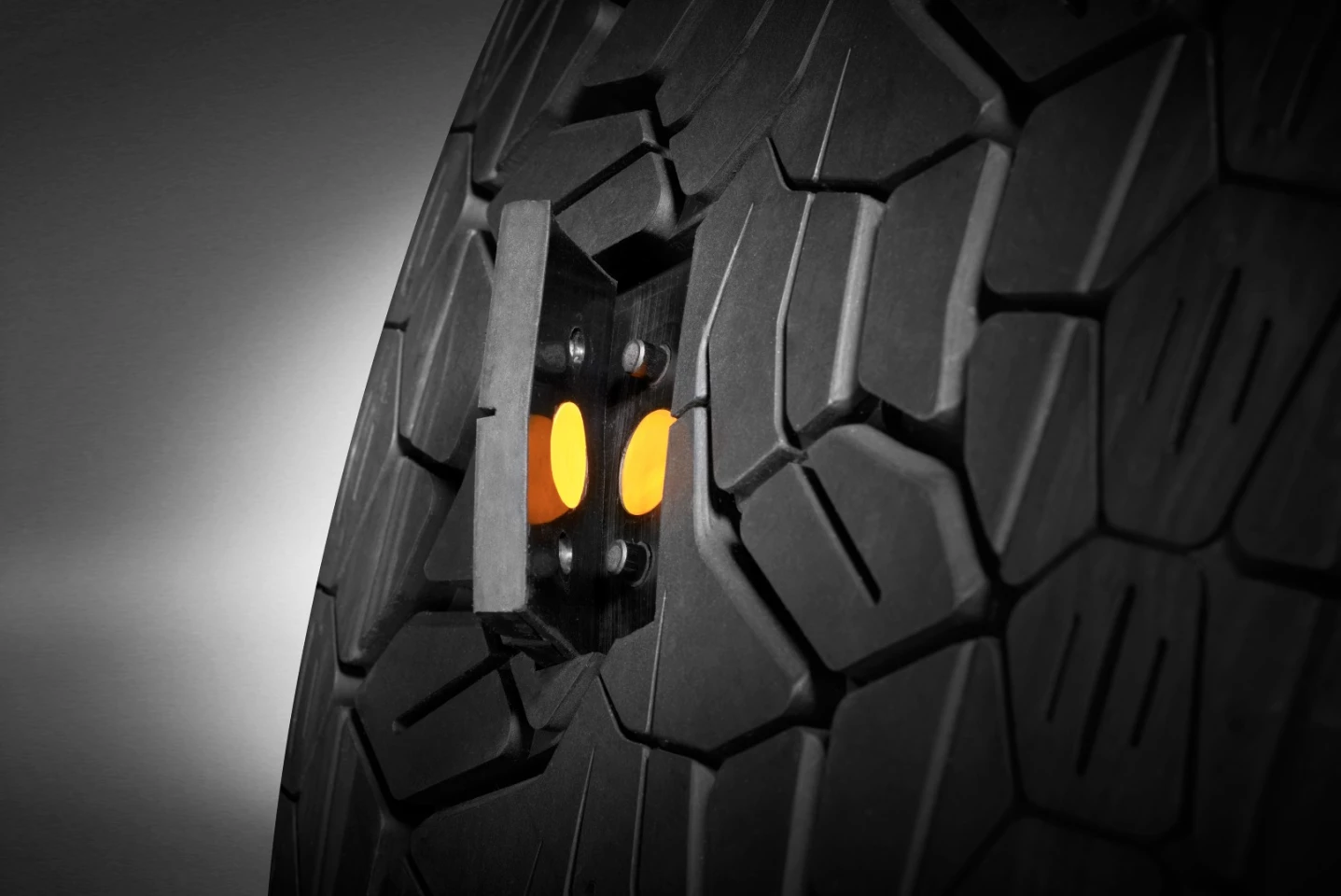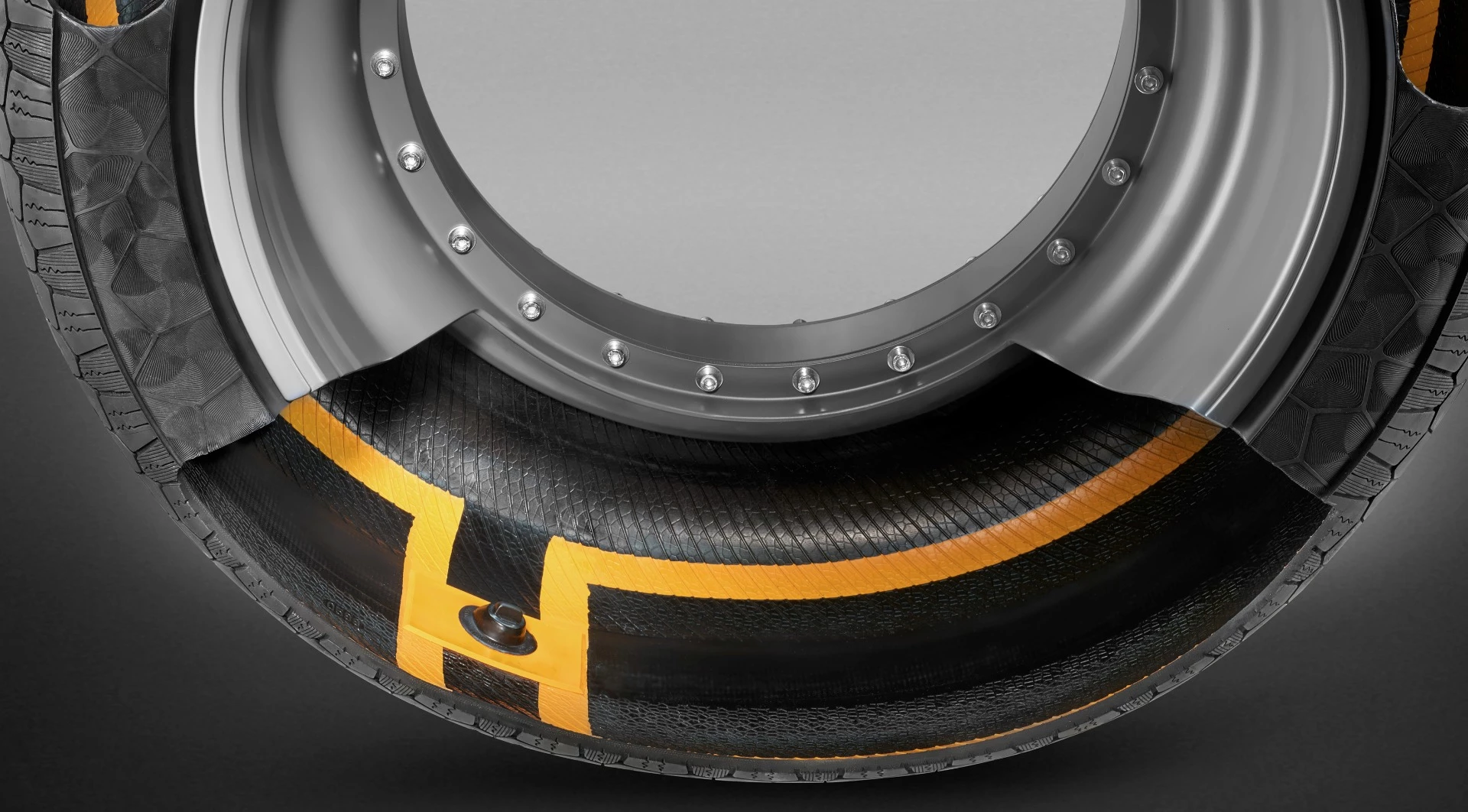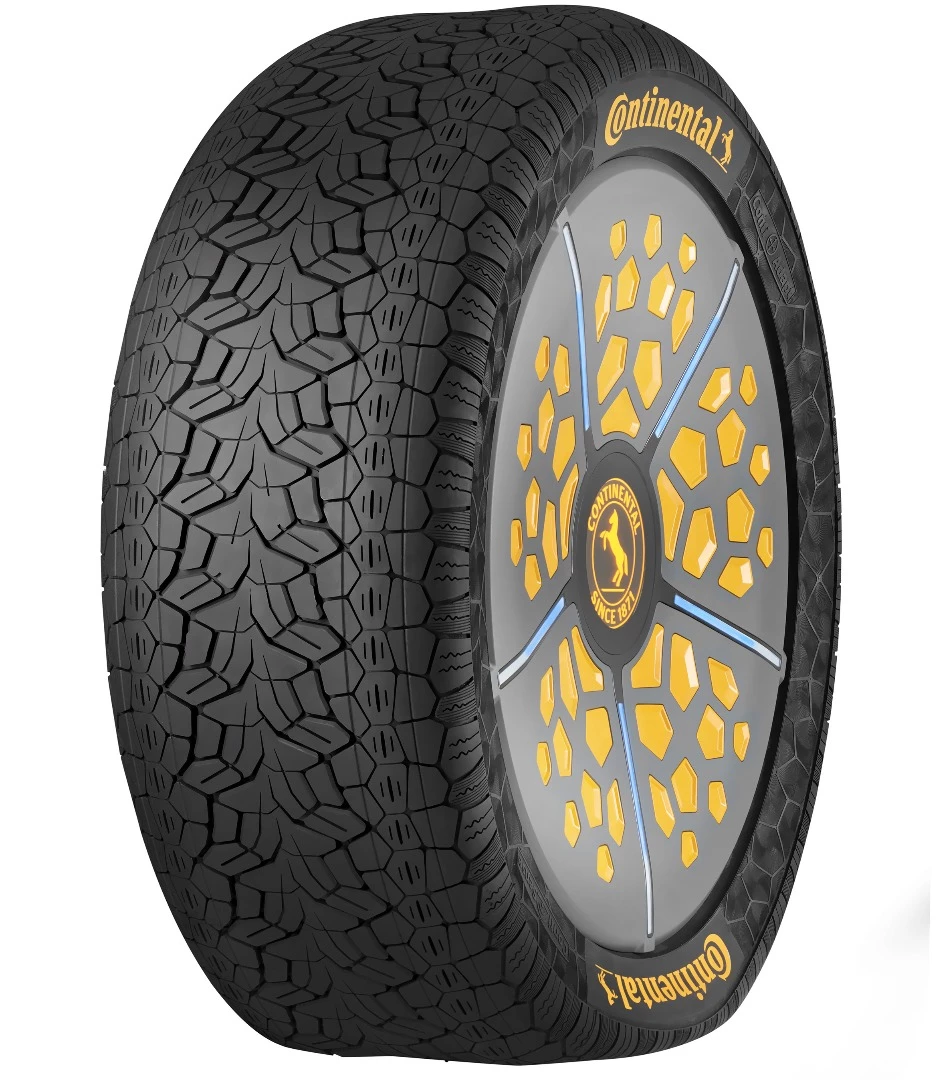It's remarkable but true that most of the cars in any given carpark have incorrectly inflated or damaged tires. Humans are apparently smart enough to earn a spare $20,000+ to buy a car, but not clever enough to monitor the functionality of one of the most important parts of that car – the tires. Hence, Continental's new concept tire makes a lot of sense as it monitors and reports on its health and can tailor its characteristics to prevailing road conditions.
It doesn't matter how good the car is that sits on a set of tires, those black round things are responsible for transmitting the acceleration, braking and cornering forces of the car to the road and are invariably the weakest link in any drivetrain. It's also true that if tires are incorrectly inflated, the handling and safety of the car they are fitted to will be diminished by somewhere between 20 and 99 percent of their optimum.
Continental's new tire concepts shown at the Frankfurt Motor Show (IAA 2017) today are named ContiSense and ContiAdapt and are the logical evolution in the development of the REDI sensor, which it launched in 2014. They will soon join Continental's tire technology portfolio, which already includes ContiSeal (automatic sealing of punctures) and ContiSilent (tire and road noice reduction).
The idea behind ContiSense is that sensors embedded within the tire continually measure tread depth and temperature and transmit that data via electrically-conductive rubber to a receiver in the car or via Bluetooth to a smartphone. If the tire is penetrated, an immediate warning is sent to the driver, much faster than any existing system, which at best only warn when the tire pressure begins to fall.
Continental intends to further develop the ContiSense system to monitor information about the road surface, such as its temperature or the presence of snow or water, but that functionality isn't at concept stage yet.

The ContiSense system is passive and simply warns, while the ContiAdapt system is proactive, does not require a human brain in the decision chain, and uses a combination of pressure and a variable-width rim to adjust and optimize the size of the tire's contact patch for prevailing conditions.
ContiAdapt initially offers four different settings from the pressure/rim-width combination, each designed as optimal for "wet, uneven, slippery and normal conditions."

Both concepts, ContiSense and ContiAdapt, were used in the concept tire shown at Frankfurt that was designed specifically to take advantage of ContiAdapt. The tire has three different tread zones, which are tailored for driving in wet, slippery or dry conditions, respectively. As the tire pressure and rim width are varied by ContiAdapt, these different tread zones become the major contact point of the road to ensure the appropriate tire characteristics for the current road conditions.
Source: Continental







